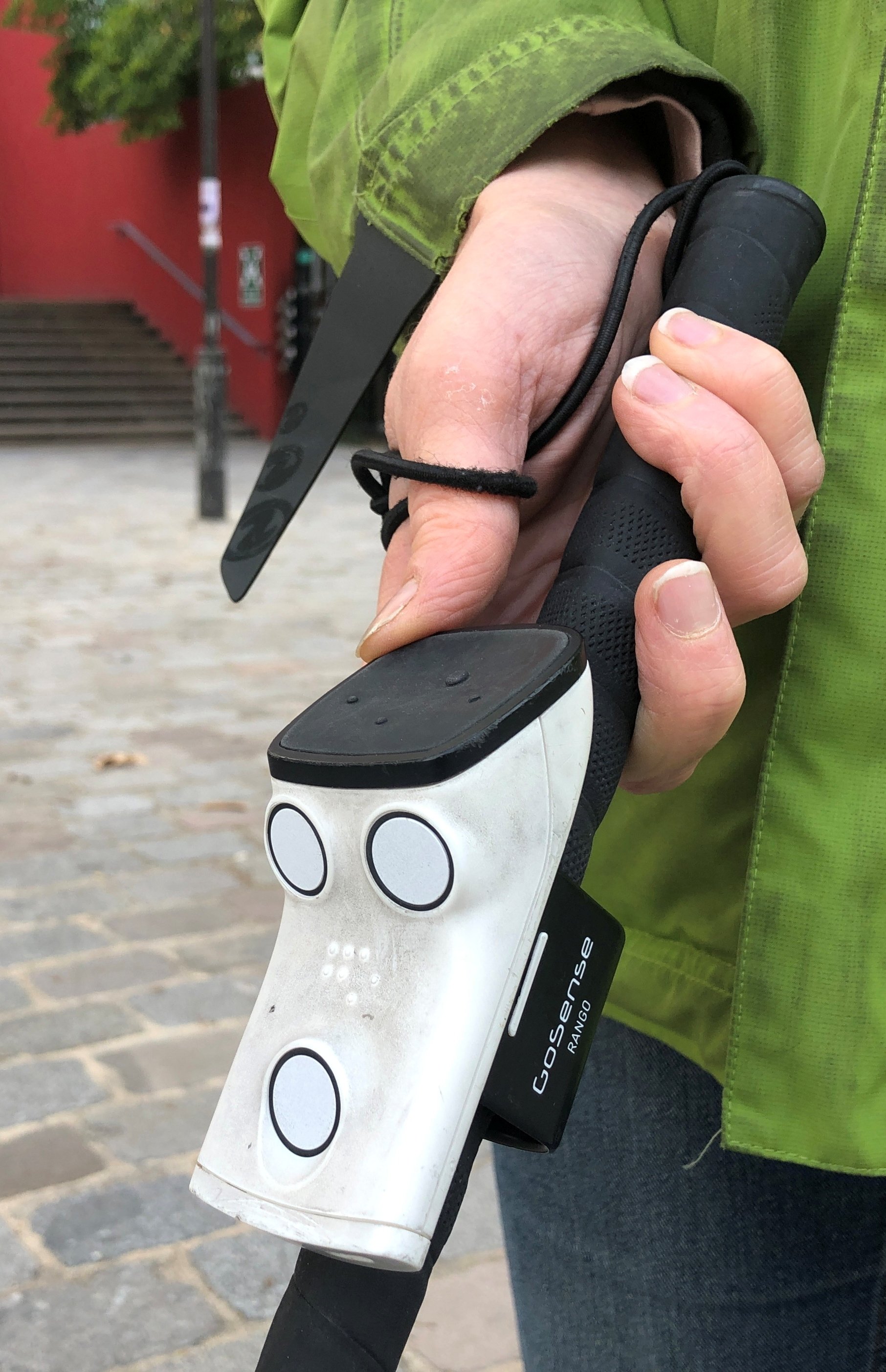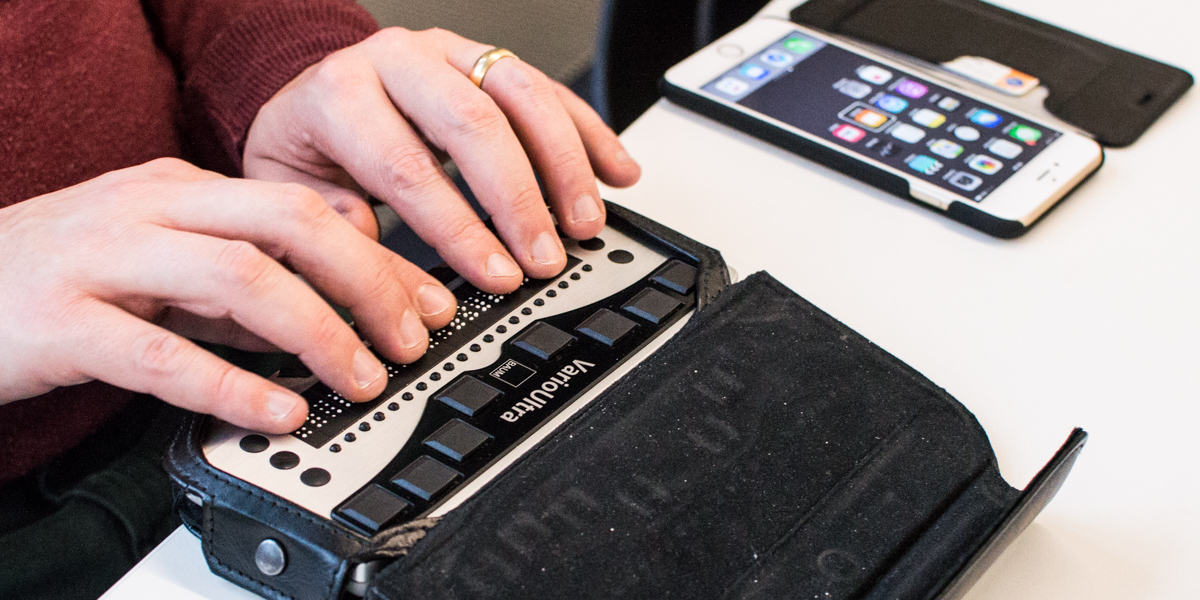Discover Innovative Tools Made for the Aesthetically Damaged
The advancement of innovative devices for the aesthetically impaired stands for a significant advancement in availability and self-reliance. Technologies such as smart glasses with AI abilities and mobile applications created to offer acoustic summaries are reshaping daily experiences for individuals. Additionally, wearable tools that use haptic responses boost environmental awareness, while modern-day Braille technologies provide brand-new means to engage with message. As these devices remain to develop, their effect on the lives of those with visual problems increases important concerns regarding the future of inclusivity and autonomy in numerous facets of life. What lies ahead in this technological landscape?
Smart Glasses for Navigation

Smart glasses developed for navigating are transforming the way visually impaired individuals engage with their setting. These sophisticated tools utilize a mix of cam innovation, man-made intelligence, and acoustic feedback to give real-time info about environments. By utilizing obstacle detection systems, clever glasses can inform customers to prospective hazards, making it possible for safer wheelchair in both familiar and unfamiliar settings.
The assimilation of GPS innovation even more enhances navigating capabilities, allowing customers to obtain acoustic directions as they relocate. This hands-free strategy not only promotes freedom however also empowers visually impaired people to navigate city landscapes with enhanced confidence. Additionally, lots of smart glasses are furnished with attributes that identify spots and road indicators, supplying contextual info that boosts the user experience.
Additionally, the advancement of these tools is continually progressing, with business functioning to improve the precision of object recognition and expand the series of navigational functions. As wise glasses come to be extra accessible and budget friendly, they hold the potential to substantially change every day life for visually impaired individuals. Eventually, these innovative tools represent a crucial action towards inclusivity, offering boosted flexibility and a better sense of autonomy for individuals navigating the world around them.

Mobile Apps for Daily Living
Exactly how can mobile applications boost the daily lives of visually damaged people? Mobile apps are reinventing the means visually impaired individuals browse their environments, handle everyday jobs, and accessibility info. These applications provide vital assistance via various performances, promoting freedom and improving quality of life.
A number of ingenious mobile applications are created especially for day-to-day living. Applications like Be My Eyes link visually impaired users with sighted volunteers using video clip telephone calls, enabling them to obtain real-time aid with jobs such as checking out tags or navigating unfamiliar rooms. Likewise, Seeing AI, established by Microsoft, uses expert system to describe surroundings, reviewed message, and determine things, efficiently transforming a smartphone right into a powerful tool for daily help.
In addition, navigation apps customized for the visually damaged, such as Aira and BlindSquare, supply audio-based instructions and ecological information, allowing customers to traverse their surroundings securely and with confidence. Beyond navigating and instant help, mobile apps additionally support company and task administration, with attributes that help users set reminders, develop order of business, and track visits. In summary, mobile applications work as essential sources, empowering aesthetically damaged individuals to lead even more independent and meeting lives.
Wearable Technologies for Help
Empowerment through modern technology is increasingly obvious in the world of wearable gadgets created to aid visually impaired individuals. These ingenious devices incorporate seamlessly right into daily life, enhancing navigation and giving vital comments to customers. For instance, smart glasses equipped with video cameras can identify faces and review message out loud, permitting users to communicate more confidently in social and expert settings.
Another remarkable innovation is using haptic feedback systems in wearable devices. These systems utilize vibrations or other responsive signals to share details about the customer's setting, such as barriers or modifications in surface, boosting mobility and safety and security. Wearable modern technologies additionally include wristbands that attach to smartphones, alerting users to notices with subtle resonances, hence boosting connection without reliance on aesthetic signs.
As these innovations remain to advance, they are not just enhancing independence for aesthetically damaged people yet likewise cultivating a greater feeling of addition in society. By bridging the gap in between obstacles encountered in day-to-day living and the capacity for freedom, wearable technologies offer as crucial tools in the pursuit for equal rights and empowerment for those with aesthetic impairments.
Sound Description Tools
Sound description devices play a critical duty in improving availability for aesthetically impaired people, supplying them with the capacity to involve with visual media. Screen readers for the blind. These devices provide narrated summaries of vital aesthetic elements in movies, tv programs, and live performances, making certain that users can completely understand the context and emotions communicated via visuals
Audio summary can be incorporated into numerous systems, consisting of streaming services, movie theater testings, and live cinema. Lots of popular streaming fancy reading glasses services currently include audio description as an access attribute, allowing customers to select it conveniently. Along with traditional media, specialized apps likewise exist, giving audio descriptions for art exhibitions, galleries, and various other cultural events.
The efficiency of audio summary depends upon the ability of the storytellers, that need to communicate aesthetic information succinctly without interfering with the initial audio. Advancements in this area are additionally leading the way for more personalized experiences, where users can change the degree of detail and pacing according to their choices.
Braille Innovations and Tools
Braille devices and innovations have considerably changed the way click to investigate visually impaired people interact with message and details. Modern advancements have actually led to the development of versatile tools that enhance proficiency and freedom amongst individuals.
Furthermore, portable Braille notetakers integrate standard Braille input with contemporary capabilities, facilitating note-taking, scheduling, and document editing and enhancing on the move. AI-powered visual aids. These small gadgets typically feature text-to-speech abilities, linking the void in between Braille and auditory details
Furthermore, cutting-edge Braille printers have actually emerged, permitting individuals to produce Braille tags, documents, and educational products efficiently. This access cultivates greater participation in instructional and professional environments, inevitably advertising inclusivity.
Furthermore, study into clever Braille modern technologies remains to expand. Devices that incorporate expert system are being explored to give real-time navigation assistance and contextual details, improving the user experience in varied settings. Generally, these developments mirror a commitment to empowering aesthetically damaged individuals via innovation, guaranteeing they can quickly access and involve with the world around them.

Final Thought
The improvement of ingenious devices for the visually impaired significantly boosts freedom and high quality of life. Smart glasses, mobile applications, wearable innovations, audio description devices, and Braille technologies collectively empower people by giving crucial navigating support, ecological understanding, and improved analysis experiences. These innovations not only foster greater incorporation however also advertise hop over to these guys autonomy in daily tasks, ultimately contributing to a much more equitable and accessible society for visually impaired individuals. Proceeded advancement in this area holds pledge for more enhancements.
As smart glasses end up being a lot more inexpensive and easily accessible, they hold the possible to significantly change daily life for visually damaged individuals. Mobile apps are reinventing the means visually damaged users navigate their atmospheres, take care of everyday tasks, and gain access to info. Apps like Be My Eyes attach visually impaired users with sighted volunteers via video clip telephone calls, permitting them to obtain real-time help with tasks such as checking out labels or navigating strange areas.Furthermore, navigating applications tailored for the visually damaged, such as Aira and BlindSquare, offer audio-based instructions and environmental info, making it possible for customers to traverse their surroundings securely and with confidence.The improvement of ingenious devices for the aesthetically damaged significantly boosts self-reliance and quality of life.
Comments on “Speech-to-Text Devices for Low Vision: Closing the Communication Gap”